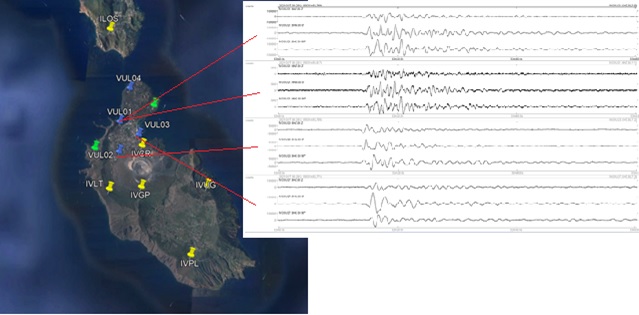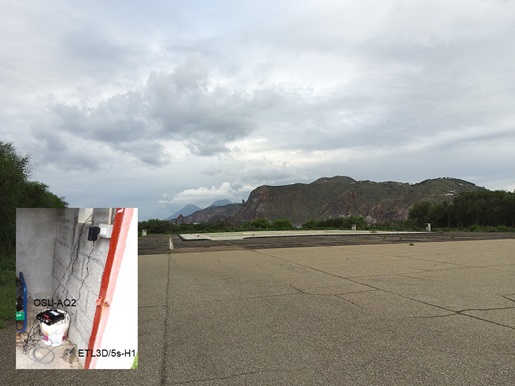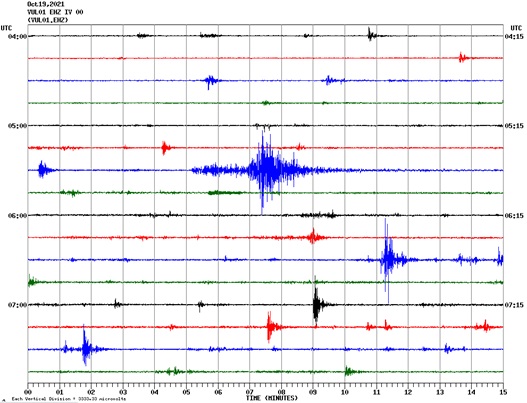Vulcano island: a test-area for the Earthquake Early Warning on-site system
During the summer of 2021, the INGV monitoring systems highlighted the variation of some geophysical and geochemical signals recorded in Vulcano (Aeolian Islands), particularly those linked to the activity of the hydrothermal system that feeds fumaroles of the Fossa of Gran Crater, which is considered the main cause of the recorded increase in micro-seismicity starting in September. Consequently, the Department of Civil Protection has ordered that the warning level be raised from Green to Yellow.
In order to improve the permanent seismic monitoring network and better localize micro-seismicity, the OSU-CT working group made available four stations, built inside the PON "EWAS" (an Early WArning System for cultural heritage), which have been deployed in the inhabited center north to the Gran Crater.
These stations, installed on 30 September 2021, were named VUL01, VUL02, VUL03 and VUL04 (figures 1 and 2). They acquire the data continuously and sampled them at 200 Hz. The data are sent in real-time to the INGV Etneo Observatory through 3G / 4G modem and the temporization is made by using GPS. All stations include an OSU-AQ2 device (see the Instrumentation section at www.ct.ingv.it/osuct for more information); VUL02, VUL03, and VUL04 have an ETL3D/5s velocimetric sensor (Fertitta et al., 2019), whereas VUL01 also has a high sensitivity and low intrinsic noise (noise density 0.2 µg / √Hz) triaxial Q-MEMS digital accelerometer. This last is integrated in the ETL3D/5s-H2, which is a modified version of the ETL3D/5s sensor.

Figure 1 - Location of the four stations VUL01, VUL02, VUL03 and VUL04 (in blue); are also shown in yellow the stations of the permanent seismic network and two other deployed stations of the INGV-OE mobile network (in green). On the right are shown the velocigrams of an LP event, recorded on October 8 at 05:32. These records refer to stations VUL01, VUL02 and VUL03 while the second three traces from above represents the accelerograms recorded by the Q-MEMS at the VUL01 station.

Figure 2 - VUL04 station installed inside the shelter of Vulcanello heliport.

Figure 3 - Seismogram of VUL01 station. Together with the micro-seismicity is also visible the recording of the eastern Mediterranean earthquake of magnitude 6.0, which occurred on October 19 at 05:32 UTC east to Crete.
The stations installed in the inhabited center of Vulcano to north of the Gran Cratere, in addition to improving the localization of the micro-seismicity (figure 3), still in progress, have the purpose of carrying out some functionality tests of the on-site Earthquake Early Warning system installed on board the stations, and developed under the PON EWAS.
We thanks to the OSU-CT Working Group and Dr. Lucia Pruiti of the Lipari Observatory (INGV-OE) for the assistance provided for the installation of stations. On the INGV Vulcani website some articles relating to the aforementioned variations of the activity on Vulcano are published (https: //ingvvulcani.com/2021/10/01/cosa-succede-a-vulcano/), to the monitoring activity currently underway on 'island (https://ingvvulcani.com/2021/10/17/monitoraggio-ingv-a-vulcano-campionato-diretto-delle-fumarole-e-misure-di-temperatura/) and on the recent activities of the volcano (https : //ingvvulcani.com/2021/10/05/lisola-di-vulcano-and-le-sue-attivita-recenti/).
For updates on activities on Vulcano, please refer to the weekly bulletins drawn up by INGV-OE.


